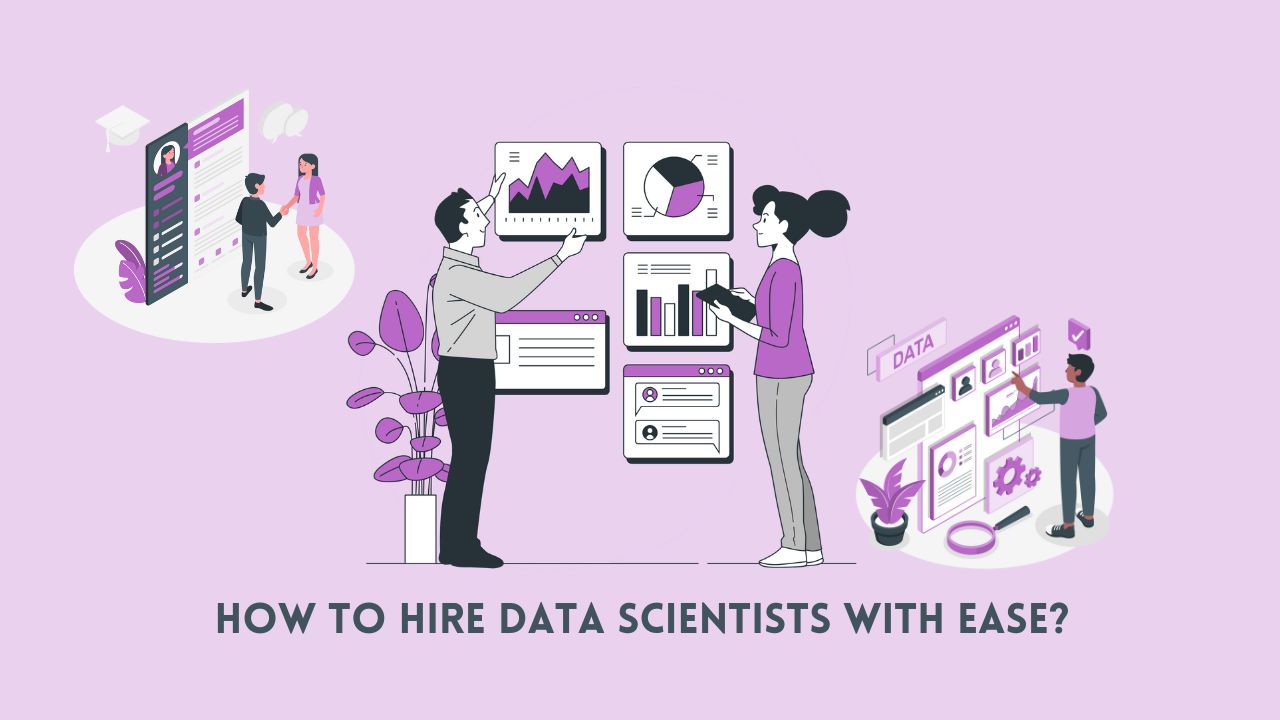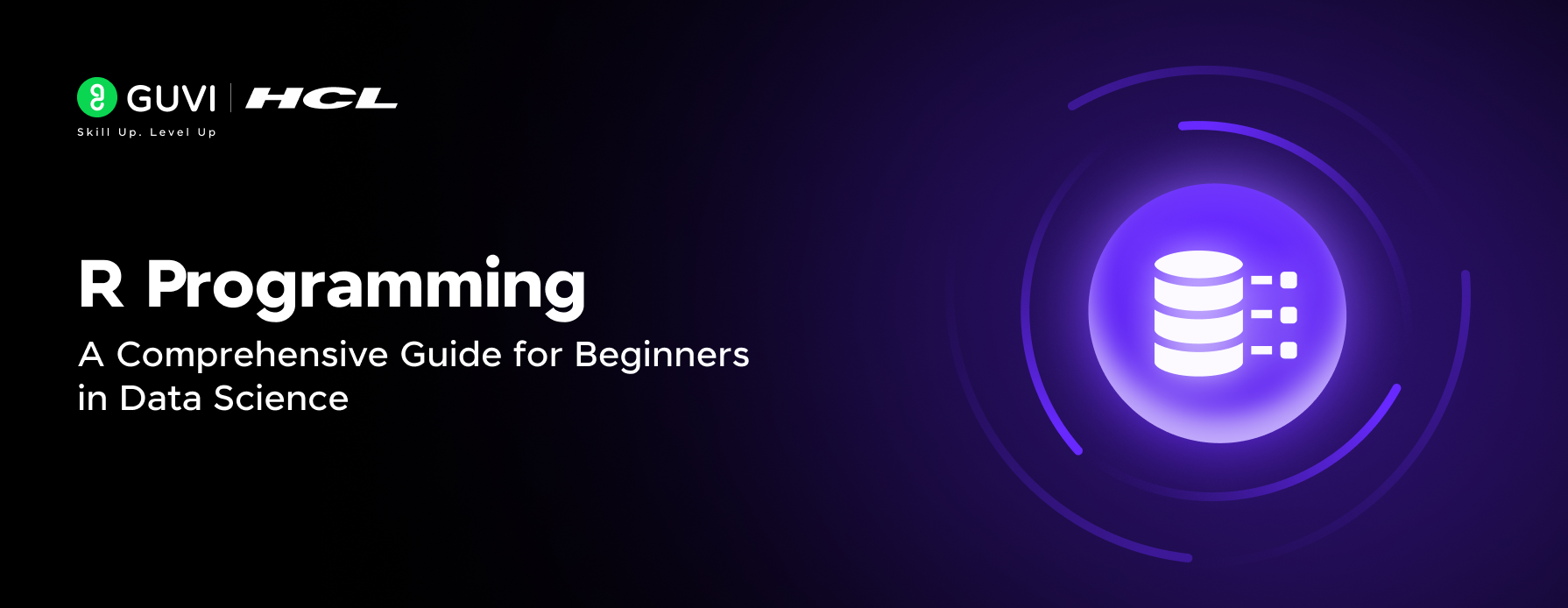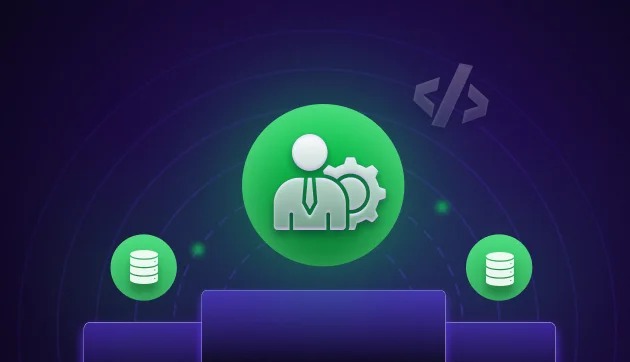
What is Exploratory Data Analysis (EDA) in Data Science? Types and Tools
Jan 30, 2025 6 Min Read 10154 Views
(Last Updated)
In data science, one important step often stands between raw data and meaningful insights: Exploratory Data Analysis (EDA). EDA in data science is the process of analyzing data sets to summarize their main characteristics, often using visual methods. This step is essential for understanding the underlying structure of the data, identifying patterns, detecting anomalies, and testing hypotheses.
Without a thorough EDA, any subsequent analysis might be built on shaky ground. In this blog, we will explore what EDA in data science is, the different types of EDA, and the various tools that can help you perform EDA effectively. Understanding and applying EDA can significantly enhance the quality of your data-driven decisions.
Table of contents
- What is Exploratory Data Analysis (EDA)?
- Exploratory Data Analysis (EDA): Types, Tools, and Best Practices
- Importance of EDA in Data Science
- Types of Exploratory Data Analysis
- Key Techniques and Methods in EDA
- Popular Tools for EDA in Data Science
- Best Practices for Conducting EDA
- Conclusion
- FAQs
- What is the primary purpose of Exploratory Data Analysis (EDA)?
- What are the main types of EDA?
- What tools are commonly used for EDA?
What is Exploratory Data Analysis (EDA)?
Exploratory Data Analysis (EDA) is an approach to analyzing datasets to summarize their main characteristics, often with visual methods. It’s typically used to:
- Understand data structure
- Detect patterns and anomalies
- Test hypotheses
- Check assumptions
Key aspects of EDA in data science include:
- Data visualization (e.g., histograms, scatter plots)
- Descriptive statistics (mean, median, variance)
- Data cleaning and preprocessing
EDA in data science is usually the first step in data analysis, helping to guide further statistical techniques.
Before we move into the next section, ensure you have a good grip on data science essentials like Python, MongoDB, Pandas, NumPy, Tableau & PowerBI Data Methods. If you are looking for a detailed course on Data Science, you can join GUVI’s Data Science Course with Placement Assistance. You’ll also learn about the trending tools and technologies and work on some real-time projects. Additionally, if you want to explore Python through a self-paced course, try GUVI’s Python course.

Having established a clear understanding of Exploratory Data Analysis (EDA), let’s explore the different types of EDA in data science, the tools that facilitate this process, and best practices to ensure you get the most out of your data exploration efforts.
Exploratory Data Analysis (EDA): Types, Tools, and Best Practices
Let’s explore EDA in data science, its importance, types, key techniques, popular tools, and best practices.
Importance of EDA in Data Science
Exploratory Data Analysis serves as the cornerstone of any data science project. Its significance cannot be overstated, as it provides the initial understanding of the data that guides all subsequent analyses.
Here’s why EDA is important in data science:
a) Data Understanding: EDA in data science helps analysts gain a deep understanding of the dataset’s structure, characteristics, and quirks. This understanding is important for making informed decisions about data preprocessing, feature engineering, and model selection.
b) Hypothesis Generation: Through EDA in data science, analysts can formulate initial hypotheses about relationships within the data. These hypotheses can then be tested using more advanced statistical methods.
c) Data Quality Assessment: EDA techniques help identify data quality issues such as missing values, outliers, and inconsistencies. Addressing these issues early in the analysis process ensures more reliable results.
d) Feature Selection: By examining relationships between variables, EDA in data science helps identify the most relevant features for modeling, potentially improving model performance and reducing computational complexity.
e) Assumption Checking: Many statistical techniques rely on certain assumptions about the data. EDA in data science helps verify these assumptions, ensuring the appropriate use of statistical methods.
f) Communication: Visual and statistical summaries generated during EDA in data science are powerful tools for communicating insights to stakeholders, making complex data more accessible and understandable.
g) Unexpected Insights: The exploratory nature of EDA in data science often leads to unexpected discoveries in the data, which can provide valuable business insights or guide further investigation.

If you’re eager to sharpen your data analytics skills, read Top 30 Data Analytics Project Ideas and kickstart your next exciting project today!
Types of Exploratory Data Analysis
Exploratory Data Analysis can be categorized into four main types, each serving a specific purpose in understanding the data:
a) Univariate Analysis
This type of analysis focuses on examining individual variables in isolation. It’s the simplest form of EDA in data science and is typically the starting point for any analysis. Techniques include:
- Frequency distributions
- Summary statistics (mean, median, mode, range, variance)
- Box plots
- Histograms
Univariate analysis helps understand the distribution of individual variables, identify outliers, and assess the central tendency and spread of the data.
If you’re ready to learn machine learning, read this comprehensive guide on machine learning and start your learning journey today!
b) Bivariate Analysis
Bivariate analysis examines the relationship between two variables. This type of analysis is important for understanding how different variables interact with each other. Common techniques include:
- Scatter plots
- Correlation analysis
- Cross-tabulations
- Line graphs
Bivariate analysis can reveal patterns, trends, and relationships that aren’t apparent when looking at variables in isolation.

c) Multivariate Analysis
This type of analysis involves examining relationships between three or more variables simultaneously. It’s more complex but can reveal intricate patterns in the data. Techniques include:
- Heat maps
- 3D scatter plots
- Parallel coordinates plots
- Principal Component Analysis (PCA)
Multivariate analysis is particularly useful for high-dimensional datasets where relationships between multiple variables need to be understood.

d) Time Series Analysis
When dealing with data that has a temporal component, time series analysis becomes important. This type of EDA in data science focuses on how variables change over time. Techniques include:
- Line plots
- Lag plots
- Autocorrelation plots
- Seasonal decomposition
Time series analysis helps identify trends, seasonality, and cyclical patterns in the data, which is important for forecasting and understanding temporal dynamics.
Key Techniques and Methods in EDA
Exploratory Data Analysis employs various techniques and methods to uncover patterns and insights in the data. Here are some key approaches:
a) Descriptive Statistics
These provide a summary of the main characteristics of the data:
- Measures of central tendency (mean, median, mode)
- Measures of dispersion (range, variance, standard deviation)
- Percentiles and quartiles

b) Data Visualization
Visual representations of data can reveal patterns that are not apparent in raw numbers:
- Histograms for distribution analysis
- Box plots for identifying outliers and comparing distributions
- Scatter plots for examining relationships between variables
- Heat maps for visualizing correlations in multivariate data
- Line charts for time series data

c) Correlation Analysis
This technique measures the strength and direction of relationships between variables:
- Pearson correlation for linear relationships
- Spearman correlation for monotonic relationships
- Correlation matrices for multiple variables
d) Dimensionality Reduction
For high-dimensional datasets, these techniques can help reduce complexity while preserving important information:
- Principal Component Analysis (PCA)
- t-SNE (t-Distributed Stochastic Neighbor Embedding)
e) Outlier Detection
Identifying unusual data points is important for understanding data quality and potential anomalies:
- Z-score method
- Interquartile Range (IQR) method
- Local Outlier Factor (LOF)
f) Missing Data Analysis
Understanding the pattern and extent of missing data is important for data quality assessment:
- Missing data visualizations
- Imputation techniques
g) Probability Distributions
Fitting data to known probability distributions can provide insights into the underlying data-generating process:
- Normal distribution
- Poisson distribution
- Exponential distribution
h) Hypothesis Testing
While more formal than traditional EDA in data science, preliminary hypothesis tests can guide further analysis:
- T-tests for comparing means
- Chi-square tests for categorical data
- ANOVA for comparing multiple groups
If you’re ready to elevate your data science skills, explore extraordinary data science projects.
Popular Tools for EDA in Data Science
The choice of tools for Exploratory Data Analysis often depends on the analyst’s preferences, the nature of the data, and the specific requirements of the project. Here are some popular tools used for EDA in data science:
a) Python Libraries
Python offers a rich ecosystem of libraries for data analysis and visualization:
- Pandas: Essential for data manipulation and analysis
- NumPy: Provides support for large, multi-dimensional arrays and matrices
- Matplotlib: A fundamental plotting library for creating static, animated, and interactive visualizations
- Seaborn: Built on top of Matplotlib, it provides a high-level interface for drawing attractive statistical graphics
- Plotly: Creates interactive plots that can be easily shared via web browsers
- Scipy: Used for scientific and technical computing
b) R and Its Packages
R is a statistical programming language with powerful EDA capabilities:
- Base R: Provides fundamental plotting and statistical functions
- ggplot2: A powerful package for creating elegant data visualizations
- dplyr: Offers a grammar of data manipulation
- tidyr: Helps in creating tidy data
- corrplot: Visualization of correlation matrices
c) SQL
While not typically associated with EDA in data science, SQL can be useful for initial data exploration, especially when working with large datasets stored in databases:
- Aggregate functions (COUNT, SUM, AVG, etc.).
- GROUP BY clauses for summarizing data.
- Window functions for more complex analyses.
d) Tableau
A powerful data visualization tool that allows for interactive exploration of data:
- Drag-and-drop interface for creating visualizations
- Ability to connect to various data sources
- Creation of interactive dashboards
e) Power BI
Microsoft’s business analytics tool offers robust capabilities for EDA in data science:
- Data connectivity and preparation features
- Wide range of visualization options
- DAX (Data Analysis Expressions) for custom calculations
If you’re ready to learn machine learning, ensure you have these essential prerequisites for machine learning under your belt.
f) Jupyter Notebooks
While not a tool specifically for EDA, Jupyter Notebooks provides an interactive environment that’s excellent for exploratory analysis:
- Combines code execution, rich text, and visualizations
- Supports multiple programming languages (Python, R, Julia)
- Allows for easy sharing and collaboration
Best Practices for Conducting EDA
To make the most of Exploratory Data Analysis, consider these best practices:
a) Start with a Question: While EDA is exploratory by nature, having a set of initial questions can guide your analysis and make it more focused.
b) Understand the Data Collection Process: Knowing how the data was collected can provide context and help identify potential biases or limitations in the dataset.
c) Check Data Quality: Always start by assessing the quality of your data. Look for missing values, outliers, and inconsistencies.
d) Use a Variety of Techniques: Don’t rely on a single method. Combine different visualization techniques and statistical measures to get a comprehensive view of the data.
e) Iterate and Refine: EDA is an iterative process. As you uncover insights, generate new questions and explore further.
f) Document Your Process: Keep a record of your analysis steps, findings, and decisions. This documentation is valuable for reproducibility and communication.
g) Be Skeptical: Question your findings and look for alternative explanations. Correlation doesn’t imply causation.
h) Consider Domain Knowledge: Incorporate domain expertise into your analysis. Understanding the context can lead to more meaningful insights.
i) Balance Depth and Breadth: While it’s important to explore the data thoroughly, avoid getting stuck on minute details. Maintain a balance between depth and breadth of analysis.
j) Communicate Clearly: Present your findings in a clear, visually appealing manner. Use appropriate visualizations and explain your insights in non-technical terms when necessary.
k) Handle Big Data Appropriately: When dealing with large datasets, consider using sampling techniques or specialized big data tools to make the analysis manageable.
l) Stay Ethical: Be mindful of privacy concerns and ethical considerations, especially when dealing with sensitive data.
Kickstart your Data Science journey by enrolling in GUVI’s Data Science Course where you will master technologies like MongoDB, Tableau, PowerBI, Pandas, etc., and build interesting real-life projects.
Alternatively, if you would like to explore Python through a Self-paced course, try GUVI’s Python course.
Conclusion
Exploratory Data Analysis is a fundamental skill in the data scientist’s toolkit. It’s the process that turns raw data into actionable insights, guiding further analysis and decision-making. By understanding the types of EDA, mastering key techniques, utilizing appropriate tools, and following best practices, data scientists can unlock the full potential of their datasets.
If you aspire to excel in data science, read the Roles and Responsibilities of a Data Scientist to explore essential insights and skills you need to succeed.
Remember, EDA is not just a preliminary step; it’s an ongoing process that should be revisited throughout the data science workflow. As you gain new insights or incorporate new data, returning to EDA can reveal fresh perspectives and ensure that your analysis remains robust and relevant.
In the age of big data and advanced analytics, the importance of EDA cannot be overstated. It’s the foundation upon which all good data science is built, providing the context and understanding necessary for meaningful analysis.
By mastering EDA, you’re not just preparing data for analysis; you’re developing a deep, intuitive understanding of your data that will inform every subsequent decision in your data science journey.
FAQs
What is the primary purpose of Exploratory Data Analysis (EDA)?
The primary purpose of EDA is to understand the structure and characteristics of a data set before formal modeling. It involves summarizing the data’s main features using statistical measures and visualizations.
By doing this, data scientists can identify patterns, detect anomalies, and assess assumptions, ensuring the data is well-understood and prepared for further analysis.
What are the main types of EDA?
The main types of EDA are univariate, bivariate, and multivariate analysis.
1. Univariate analysis examines individual variables to understand their distribution and summary statistics.
2. Bivariate analysis explores relationships between two variables using techniques like scatter plots and correlation.
3. Multivariate analysis investigates interactions among three or more variables to uncover complex patterns.
What tools are commonly used for EDA?
Common tools for EDA include Python libraries like Pandas, Matplotlib, Seaborn, and Plotly, which aid in data manipulation and visualization. In R, popular packages are ggplot2, dplyr, and tidyr. Additionally, tools like Tableau and Power BI are used for comprehensive data visualization, while Excel is practical for basic EDA tasks.

















![10 Impressive Data Visualization Project Ideas [With Source Code] 9 Data Visualization Project Ideas](https://www.guvi.in/blog/wp-content/uploads/2024/11/best_data_visualization_project_ideas_with_source_code_.webp)







Did you enjoy this article?